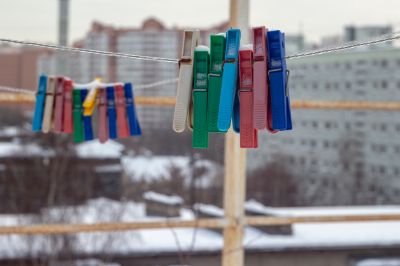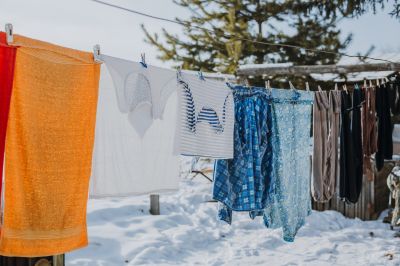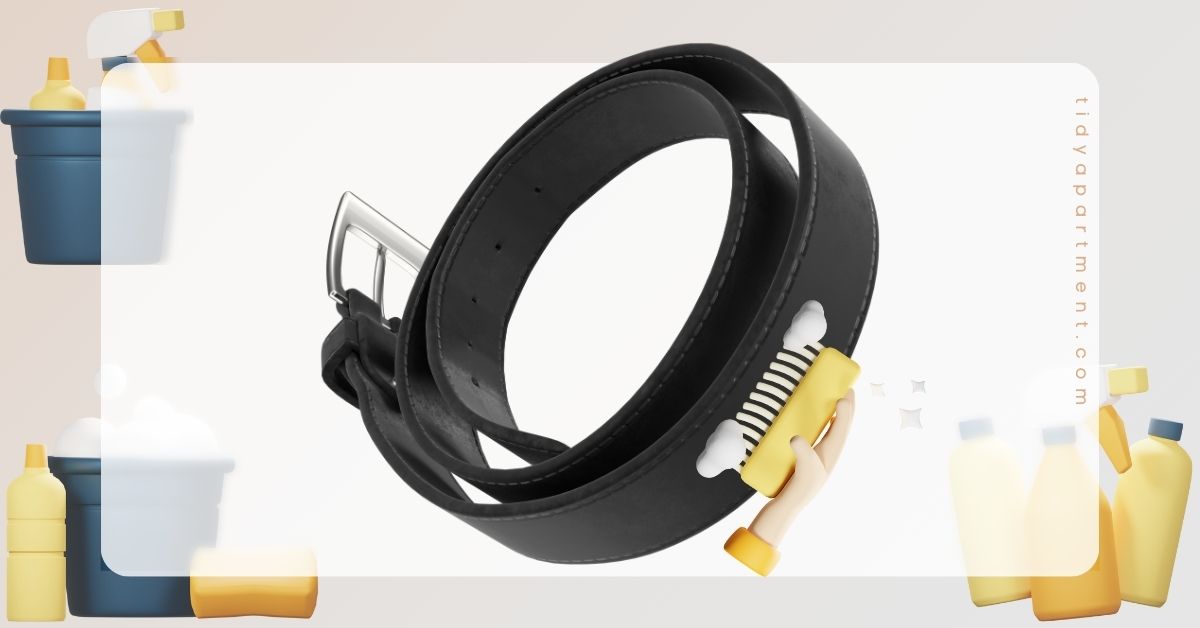As winter sets in, drying clothes outside becomes challenging due to plummeting temperatures and unpredictable weather conditions. But how low is too low, and what’s the minimum temperature for drying clothes outside? While the idea of outdoor drying during the winter may seem challenging, it is still achievable with proper knowledge and techniques.
Drying clothes can be challenging in winter, with less sunshine and freezing temperatures. Many prefer tumble-drying to mitigate this challenge, but it puts a big hole in your pocket with high energy bills. That’s the reason most prefer to dry clothes outside.
Page Content
Minimum Temperature For Drying Clothes Outside
The minimum temperature for drying clothes outside is above freezing point (0°C or 32°F). Factors like humidity, wind speed, and sunlight affect drying time. Choose mild temperatures, lower humidity, and moderate wind speed for optimal results.
It underscores the stark reality that temperature alone cannot be the reason to dry clothes. It also needs a warm climate and wind to sway the clothes and speed up the evaporation. Less or no humidity also helps to dry clothes faster.
Can You Dry Clothes Outside in Winter?
There’s genuinely no harm in drying clothes outside in the winter. The only challenge we can anticipate here is the slow drying of clothes.
The challenge of drying clothes outside in the winter may escalate if it rains or snows. However, the clothes will ideally dry on a windy day with less or zero humidity.
Avoid drying clothes outside on a humid day. Humidity is rare during wintery days, but nature is unpredictable, right? What if an unprecedented rainfall or snowfall occurs? Rain will directly wet your clothes, while snow formations will eventually melt.

How Long Will it Take to Dry Clothes Outside in Winter?
Clothes can dry within 3 to 48 hours if hung outside in the winter. The drying time for clothes outside in winter can vary depending on several factors, including the type of clothing, temperature, humidity, and wind speed.
In colder temperatures, the evaporation process slows down. To expedite the drying process, choose a sunny and less windy day, spread the clothes evenly, and ensure proper airflow.
Considering 7 hours of daylight per day, clothes may take up to 48 hours to dry completely, with the appropriate conditions.
Related: Can you iron wet clothes without damaging them?

Tips For Drying Clothes Outside in Winter
The following tips will ease your effort to dry your clothes outside during the winter.
1. Use a Spin Cycle
The purpose of the spin cycler in a washing machine is to remove excess water from the clothes. Use the spin cycle at top speed to de-moisturize your clothes. It will substantially reduce the drying time.
2. Expose the Wide Surface of Clothes
Don’t fold bedsheets, towels, and open zipper items in half while drying. Instead, hang them by their edges. It helps expose the clothes’ maximum surface to the air, drying them faster.
3. Hanging Line Should be Sheltered
Nature is unpredictable. It may rain anytime, especially during the winter. As a preemptive measure, shelter the hanging clothes by erecting a tarpaulin shed, garden umbrella, fiberglass, or corrugated metal sheet. It helps you prevent the clothes from drenching, but the air that moves in and out of the shed helps the drying process.
4. Give Clothes Time to Dry
Clothes will take time to dry during the winter. Therefore, give your clothes sufficient time to dry. You can hang them at the earliest possible time to dry them sooner. To summarize, you must use the daylight as much as you can.
How to Dry Clothes Without Dryer in Winter?
Using a dryer during the winter is a quick way to dry your clothes. However, the simplest, most affordable, and safest way to dry your clothes is to hang them on a clothesline. However, you may have to adopt a blend of indoor and outdoor drying.
However, in inappropriate weather conditions, you may follow the given tips to quicken the drying process.
1. Extra Spin Cycle
An extra spin cycle at top speed to remove as much water as possible helps speed up the drying process.
2. Wrap Washed Clothes in a Towel Before Drying
Lay a thick towel capable of absorbing water on a flat surface. Let your garment lay on this towel layer and roll both together. Then squeeze the towel. It helps the towel absorb extra water from the garment, leaving it less damp.
It’s best to do one garment each time for effective results. Squeeze the towel after every squeeze to remove the extra water absorbed. Small clothes can be collectively wrapped, provided they don’t touch each other closely.
3. Use a Drying Rack Outside
An easily portable drying rack is helpful if you live in a region where uncertain rains are usual. It helps you bring your clothes inside from outside without wasting much time if sudden rain befalls.
4. Follow the Weather Forecast
Technology has enabled humankind to get weather forecasts in advance. Even if it’s not 100% accurate, it will help you plan your day and keep you alert if the weather department has predicted rainfall or snowfall.
How to Dry Clothes Indoor Safely?
The safest ways to dry clothes indoors are:
- Bring the clothes inside only after ensuring they are dry as much as possible.
- Procure a dehumidifier and keep it next to your laundry. A dehumidifier helps to absorb excess moisture that evaporates from the clothes. It helps with any possibility of mold development.
- The ideal place for your laundry is adjacent to an open window or an area with sufficient ventilation. Though unworkable in rainy or freezing weather, it is an ideal way to keep your home free of VOCs.
- Alternatively, you can place the laundry in the bathroom or kitchen having exhaust fan. It helps to push out the moisture and VOCs from the air.
- A few areas, such as the collar or pocket, remain damp despite the remaining garment drying completely. In such a situation, a warm blow dryer comes in handy to target the dampened areas to dry them quickly.
- Ensure you use natural soap or detergent that releases less hazardous elements in the air.

What are the Health Implications of Drying Clothes Indoor?
Drying clothes involves the elimination of certain compounds along with water. These include mainly volatile organic compounds (VOC) that are hazardous to your health.
Excess VOCs in the house may lead to severe health conditions, which include eye, nose, and throat irritations. In addition, it can also result in headaches, damage to the kidneys and liver, nausea, and damage to the central nervous system. According to the Minnesota Pollution Control Agency, prolonged exposure to VOCs may cause cancer.
In addition, the moisture evaporating from the clothes doesn’t get mixed up with nature. It remains in your home and increases humidity. It results in the development of mold spores that can aggravate asthma, bronchitis, fatigue, sinusitis, and other irritations.

- What temperature is too cold to dry clothes outside?
There’s no temperature too cold to dry clothes outside. In a zero humidity scenario, the clothes can dry at freezing temperatures too. However, they will take longer to dry than in the summer.
- Can clothes dry in 65-degree weather?
65 degrees F is around 18 degrees C, which is quite cold. Drying clothes at this temperature isn’t a problem, provided there is no rainfall or snowfall with zero or less humidity.
Conclusion
The minimum temperature for drying clothes outside depends on various factors influencing evaporation. While there is no fixed threshold temperature, it is generally recommended to avoid drying clothes outside when temperatures fall below freezing point (0°C or 32°F).
However, it is important to note that the minimum temperature can vary based on several factors, including humidity levels, wind speed, fabric type, and individual preferences.
Fabrics with high moisture retention, such as thick cotton or wool, may require higher temperatures for efficient drying. On the other hand, lightweight and quick-drying fabrics, like synthetic blends, may tolerate lower temperatures more effectively.
While outdoor drying offers energy-saving benefits and the fresh scent of sun-dried clothes, it is important to prioritize the care and longevity of garments. If temperatures are too low or weather conditions are unfavorable, alternative drying methods can be utilized, such as indoor air drying or low-temperature settings on electric dryers.
Related: Can you dry light and dark together?
Related: Can you mix colors in the dryer?
Related: Dryer Balls vs. Dryer Sheets.



